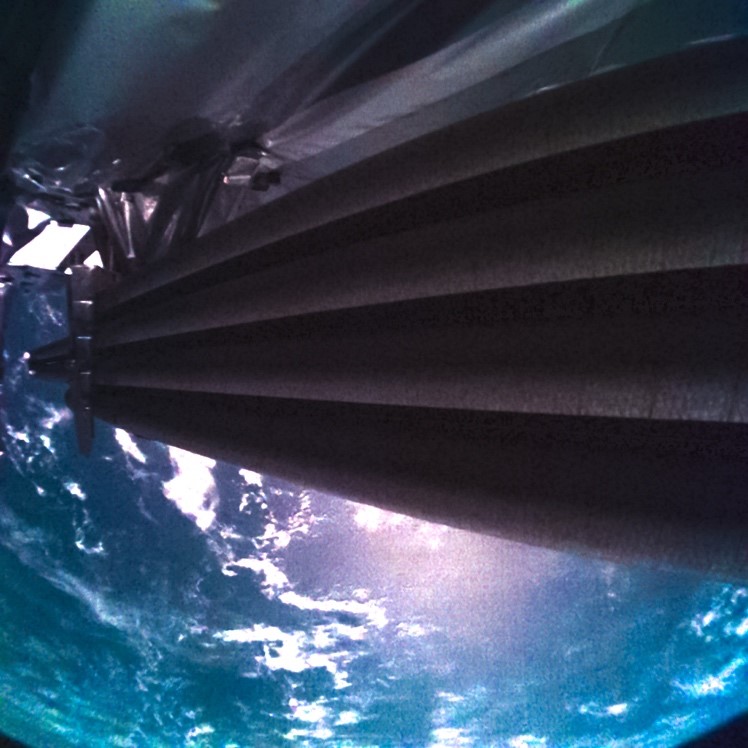In a scene eerily reminiscent of the Galileo spacecraft’s antenna issues, ESA’s Jupiter Icy Moons Explorer (JUICE) is having a problem with an antenna. The 16-meter-long radar Radar for Icy Moons Exploration (RIME) unit is stuck on a tiny pin that’s keeping it from deploying fully.
The spacecraft teams are working to get the antenna freed, and it appears that they only need to nudge it a few millimeters to break it loose. The problem first cropped up on the day the unit tried to deploy. Since then, the teams have nudged and rocked it back and forth. So far, the antenna is still stuck and stowed in its slot on the spacecraft.
Luckily, the rest of the spacecraft instruments and antennae have deployed, including the solar arrays and the magnetometer boom arm. So, the technicians still have some time to work on unsticking RIME before the spacecraft is out of its commissioning period.

What’s Next to Unstick the Radar Antenna?
Since it appears that the RIME is working fine, it just needs to be freed to do its work. The team plans an engine burn to shake the aircraft. That might free the antenna enough to get it deployed. They can also gently rotate the spacecraft into the sunlight. That would warm up the radar antenna and mount enough to help jar it loose. So, all is not lost.
The RIME instrument is a radar sounder. That means it can send radar waves to the surface of a world. Those waves can bounce back from the crust and give details about its topography. They can also penetrate up to 9 kilometers beneath the crust. That gives planetary scientists information about subsurface geology and geophysics. For example, the radar could reveal places on the ocean floor of a moon where heated water is boiling up from the core. This is crucial science for understanding the characteristics of those worlds, how they’re heated from within, and if there’s any chance they could be habitable to life.
More about JUICE
The JUICE lifted off French Guiana on April 14, 2023. Its main mission is to explore the icy moons in the Jupiter system. First, it has to get through the commissioning phase, as it travels out from Earth. It won’t go directly to Jupiter. Instead, it’s embarking on an eight-year-long cruise mode that will take it through four gravity-assist flybys past Earth and Venus. Those should help slingshot the spacecraft toward a January 2029 arrival at Jupiter.
After that, the spacecraft will perform 35 flyby approaches to Europa, Ganymede, and Callisto. The RIME instrument is a crucial part of the moon flybys. It will perform radar sounding beneath the surfaces of these watery moons and send back data about each of their icy crusts.
The spacecraft also has a suite of other instruments for remote sensing, geophysical studies, particle detectors, a magnetometer, and a radio and plasma wave detector.

